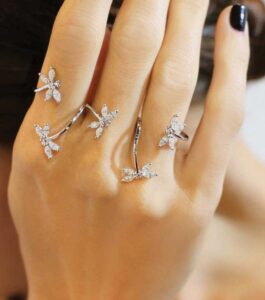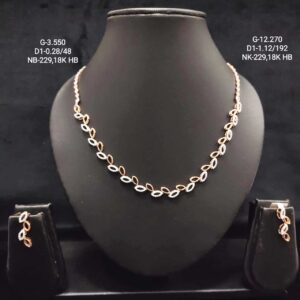Jeweller Rahul Amrute | Guide to Gold Transactions | Thane
Jeweller Rahul Amrute throws light on the basics of purchasing and encashing gold and gold jewellery
Has the act of buying and selling gold changed over the years?
Yes, it has become more organised. It can be explained by comparing the pre-hallmarking and post-hallmarking phases.
Before hallmarking became prominent and compulsory, the only way for people to know about their gold’s purity was to believe in their family jeweller’s expertise and goodwill. As no concept of “Third Party Certification” existed back then, jewellers had the ultimate supremacy to determine the authenticity of gold. Many times, this led to customers getting cheated or the jewellers’ judgement being inappropriate or imperfect. This is the reason why people had to return to the same shop while reselling or making jewellery out of it.
The compulsion of hallmarking (especially in urban regions) brought in standardisation and a “Third Party Intervention” in the form of Government involvement. The Government started authenticating and certifying the quality of gold, bringing decorum in the market. This act assures buyers of the authenticity and purity of the gold they are buying and hence nullifies the scope of human errors and cheating.

What assurances or guarantees should a shop offer regarding the authenticity and purity of the gold jewellery sold? Does this differ from shop to shop?
The Bureau of Indian Standards (BIS) certifies and hallmarks every piece of jewellery. There is a set of holograms which should compulsorily exist on gold. Firstly, the triangular logo of BIS is imbibed on the gold. Secondly, its purity is mentioned on it – 958 (95.8%) for 23 carat, 916 (91.6%) for 22 carat, 750 (75%) for 18 carat gold, etc. Thirdly, the piece contains a mark of the jeweller from whom it is bought – this mark is a code unique to every shop. Recently, in an attempt to strengthen the authenticity of gold purchased, the concept of Hallmark Unique Identification (HUID) has been brought into functioning. HUID is an alphanumeric code imprinted on the gold by the hallmarking centre and is unique to every piece of jewellery. This code cannot be matched to any other piece of jewellery across India. When a buyer purchases gold, this code is supposed to be mentioned on the receipt. The code helps the Government monitor the stock, sale and movement of gold in the market. Moreover, in case of losing the receipt and hallmark details, the owners can enter this HUID on the official website of BIS to view the purchase date, weight and authenticity-related details of that piece.
It must be noted that the gold purchased is below 2 grams, it is hallmarked but not given a HUID.

Are there any drawbacks of selling gold in a different shop from the one the person bought it from?
The Government’s aim behind hallmarking jewellery was to give customers the freedom to sell their gold in whichever jewellery shop they want to sell it in. Every jeweller is bound to buy the gold a customer wants to sell and after verification of the hallmark, pay the customer according to the then rate and weight of the gold, without cutting any extra charges.
What are the things people should keep in mind while selling gold?
There is a common misconception that one sells the same quantity of gold one once bought. This misunderstanding makes people expect and demand the amount then equivalent to the weight of the gold when it was first purchased. It must be understood that all metals, including gold, have wear and tear. Daily or regular use leads to minute particles of gold (which are invisible to the human eyes) falling or rubbing off. If we see the current rates of gold, even losing 100 milligrams of it would lead to a loss of about Rs.700. As an example, if a person wears a gold ring weighing 5 grams daily for five years and then goes to exchange or sell it, it weighs only 4.5 grams. Nothing can be done about the lost gold. Only the gold that is present on the ring then can be sold. Similarly, when a gold jewellery breaks and a small part of it is lost, the customer is at loss while selling it. Therefore, it doesn’t matter how much gold the receipt shows was bought – its weight while selling is what is taken into consideration. If the gold is hallmarked, the jeweller is bound to pay the customer according to the ongoing rate.
Imagine a person who has come to you to sell gold. Explain the steps this process will involve.
If the person has come to sell a gold coin or a gold bar which has a 995 mark on it, demanding cash in return, it is observed that there is generally no loss of gold. That is, a coin of 10 grams weighs 10 grams both at buying and at selling. Nevertheless, it must be noted that, when it comes to selling gold, a rate which is approximately 0.5-1.5 percent lesser than the ongoing rate of gold is considered. This percentage differs from jeweller to jeweller. It is safe to assume that there will be at least 1% drop in the current rate when it comes to selling gold. For example, if one buys gold worth Rs.70,000 and immediately goes to sell it, the person will receive Rs.69,300 in cash or in cheque. It is just like the difference between the buying and selling rates of dollars.
If the person has come to sell gold jewellery which does not have a hallmark, the purity is tested, the amount of 24 carat gold in it is checked and the rate is then applied to it. About 1-2% of the difference to the ongoing rate is applied. If the jewellery has a hallmark, the details are considered. 22 or 23 carat gold will then be paid for according to its weight and the ongoing rates for the caratage, after applying the difference to it.
D.P. Amrute Jewellers is a family-owned business established in 1936 by Dattatray Panduranga Amrute, continued by his son Mahesh Amrute, now taken over by grandson Rahul Amrute. The business revolves around retailing, manufacturing and exporting (predominantly directly to clients in the USA and Dubai) of gold and real diamond jewellery, while also dealing with precious and semi-precious gemstones. The jewellery store is located at Station Road, Thane (West).
Rahul Amrute is a partner in D.P. Amrute Jewellers. He is a commerce graduate who holds a diploma in Gemology and Diamond Grading. Since 2000, Rahul has been actively present at the shop and has played a major role in endeavouring D.P. Amrute Jewellers to sell diamond jewellery.
This Akshaya Tritiya, D.P. Amrute Jewellers is offering pure gold coins with a 100% discount on making charges. Visit the store on the day of Akshaya Tritiya to avail this offer.

